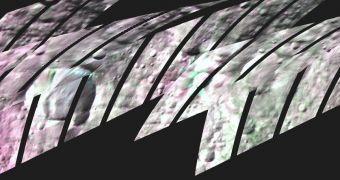After analyzing data sent back to Earth by the Dawn spacecraft, scientists with the NASA Jet Propulsion Laboratory (JPL), in Pasadena, California published a new study suggesting that the giant asteroid Vesta may have not formed quite like researchers had first suggested.
For some time now, planetary scientists have argued that the asteroid started forming just like all the planets in our solar system. Some time later, they said, something happened that stunted Vesta's growth and turned it into a protoplanet. The new study suggests this interpretation may be simplistic.
If the celestial body would have followed the standard planet-forming process, then its interior should have differentiated into a core, a mantle and a crust. In a structure featuring these three layers of rock, the mineral olivine should have been concentrated in the mantle, which is not what Dawn saw.
In a paper published in this week's issue of the top scientific journal Nature, the JPL group presents data from the Visible and Infrared Mapping Spectrometer (VIR) instrument aboard Dawn. Analysis of deep craters in the southern hemisphere did not reveal olivine in the mantle.
Instead, VIR found copious amounts of the mineral in the northern hemisphere, laying right on the surface of the crust. The data “indicate a more complex evolutionary history than inferred from models of Vesta before Dawn arrived,” explains Maria Cristina De Sanctis.
The researcher is a co-investigator with the Dawn mission, and the leader of the VIR team. She holds an appointment with the National Institute for Astrophysics, in Rome, Italy. One of the explanations for the Dawn data is that Vesta only underwent partial melting in its early history.
This process created pockets of olivine, instead of concentrating the mineral in an even layer across the mantle. Additionally, it could be that the exposed mantle layers in southern hemisphere glaciers were recently covered by additional layers of materials, making olivine observations difficult.
“These latest findings from Dawn stimulate us to test some different ideas about Vesta's origin,” says the deputy principal investor of the Dawn mission, Carol Raymond, who is based at JPL.
“They also show us what additional information we can learn by going into orbit around places like Vesta to complement the bits that come to us as meteorites or observations from long distances,” she concludes.

 14 DAY TRIAL //
14 DAY TRIAL //